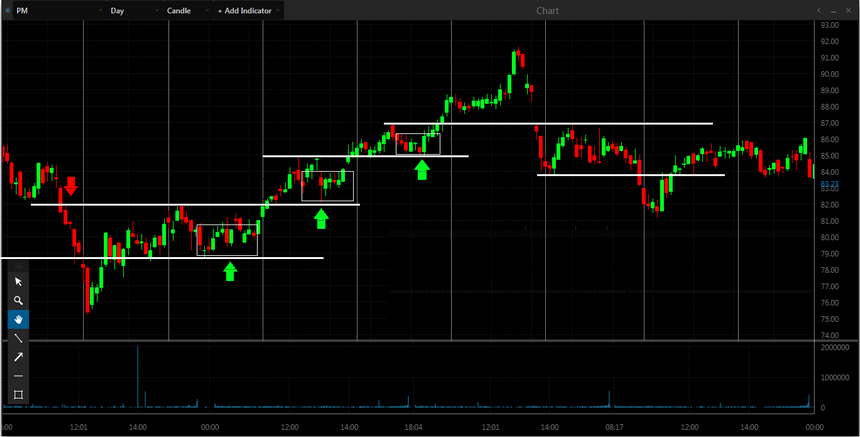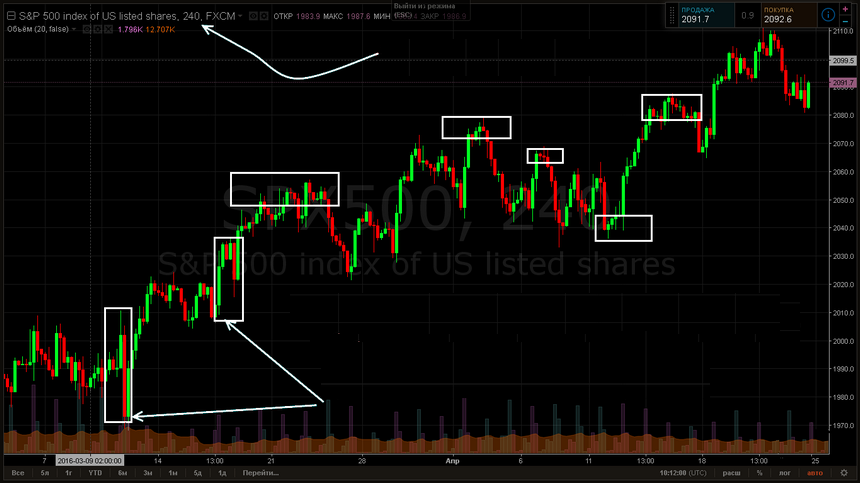Trading technology swing trading, first appeared in the book “Taylor Trading Technique” (1950) in the form of a small note on the current state of futures. Let’s try to understand if this technique has a real secret and benefit for an ordinary trader.
Key Points of Swing Trading Strategy
J. Taylor also described the swing trading technique in the zone of resistance levels, as well as the basic 3Day method, when the days within the trading cycle are classified as “buy Day” (day of purchases), “sell Day” (day of sales) or “sell Short” ( day of short sales). But even today, despite the frequent comments and recommendations of market luminaries (Williams, Raschke, Gerchik), this technique has not become a serious trading strategy.

According to the Dow theory, any price movement is interpreted as part of a cycle and the purpose of swing trading is to “catch” medium-term fluctuations as much as possible in order to enter a strong trend in time. The technique is practically not
is automated, traders with good analytical thinking and quick reaction work according to it, in whose arsenal there are different tactics – depending on the situation.
Swing trading is not a strategy, but rather a style of market behavior, a cross between intraday and long-term trading. The methods by which the trader monitors the cyclical dynamics of prices are not strictly regulated: they use the usual trend strategies and methods for the breakout of the range. Swing positions are held open from several hours to 3-5 days (as the trend develops), the number of entries and additions should be minimal. The desire to squeeze the maximum out of the trend means increased risks, and therefore StopLoss is mandatory, taking into account the average volatility of the asset and the state of the market.

Swing traders operate on any asset with a clear trend, except during periods of speculative or sluggish market. Assets with high spread / swap costs (exotic, non-standard crosses) – not traded, it is recommended to trade in the direction of a positive swap, average (or minimum) leverage, open positions – no more than 2-3 assets.
However, there are a few rules that need to be strictly adhered to:
- If the deal is “correct”, then almost immediately there is a breakdown in the direction of profit;
- If there is no breakdown or the price goes against the deal for 2-3 hours, close it at the first convenient situation;
- If there is a fast speculative profit, we fix the deal (you can re-enter on a pullback);
- Optimal positions should be closed by StopLoss / TakeProfit;
- Only profitable trades are transferred to the next day, unprofitable positions are closed manually on the same day.
As well as an experienced swing trader:
- Does not open new positions at the market opening and key trading sessions;
- Closes deals in the event of a clear reversal or before the release of fundamental news that can break the current trend;
- Never struggles with a trend, does not sit out and does not average losses;
- If in doubt about the mid-term forecast, it closes trades and starts looking for a new entry point.
Technical analysis for swing trading
All signals are based on the assessment of volatility, volumes and trend indicators. From the technical point of view, it is assumed to enter purchases after a series of short-termsells – bears are exhausted and cannot break the bullish trend, and sells – after working out a wave of unsuccessful purchases.
Regardless of the specific strategy, swing trading contains the following steps:
Determining the Trader’s Active Zone
The easiest way to show in practice: applying for D1 SMA (10) and EMA (30) – the active zone is the space limited by these two moving averages.

Such a zone focuses the trader’s attention – the first signal for a pullback appears in this zone, after which it is already worth looking for confirmation signals for entry: power levels, candlestick patterns, etc.
Reversal estimation
All key points must be confirmed by any means.

This will allow you to enter the market in the zone of the beginning of the trend, at the fastest price movement, and in the future – to confidently hold an open position and close (or reverse) only at the moment of a true reversal.
Volume estimation
Volume dynamics are critical to swing trading. Since there are no real trading volumes on Forex, tick data is analyzed, their main meaning is to check attention to the selected asset at a given time.

It should be understood that any speculative surge in volumes can break the trend, knocking out both bulls and bears out of the market, while on a stable volume, the trend forms and reverses slowly, which gives the swing trader the opportunity to make money.
A few practical notes
Advice from personal practice, so we take everything critically and apply it according to the situation;
- If we assume that the market works according to the classic 5-day Elliott pattern (3-4 days along the trend and 1-2 days in a pullback), then we enter after 1-2 average swing periods (for purchases – from above, for sales – from below);
- For entry, we use any strong price surge near strong price ones – after retesting the level and the corresponding situation on the volumes;
- When transferring profitable positions, the stops should be set in such a way as to minimize the loss from a possible overnight gap.

The recommended timeframe for analysis is at least H4, for position tracking – at least 2-3 days, a decrease in the period reduces the quality of the analysis. We use cross-confirmation of technical indicator signals, as well as all types of divergences.

You need to understand and be able to use to see all reversal patterns on the price chart, and not only basic ones (dojis, harami, hammers), but also multi-candlestick structures. It can be very beneficial to combine long-term swing trading tactics and short-term VSA, since the principles of analysis are practically the same.

Conclusion
The result of any swing trading strategy weakly depends on the level of the deposit and the trading asset, the main thing is a high-quality forecast for the next 3-5 days. Despite the fact that this technique is close to every trader, it requires experience in trading both in a trend and in a range, confident knowledge of all types of analysis, the ability to switch between 2-3 trading strategies and strong nerves to hold positions for several days. Therefore, it is not recommended for beginners.


 Deriv
Deriv  AdroFX
AdroFX 